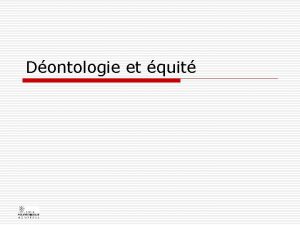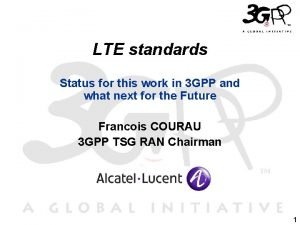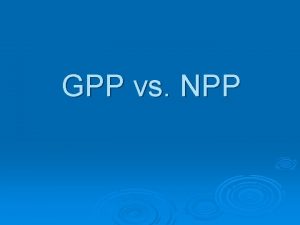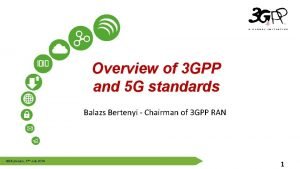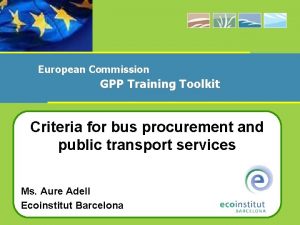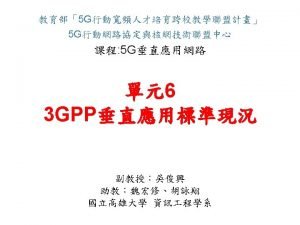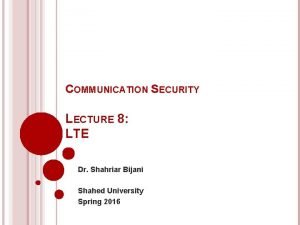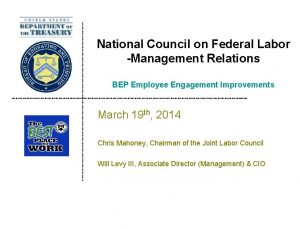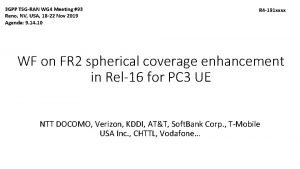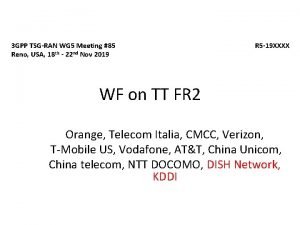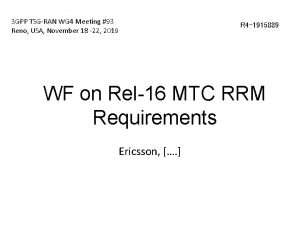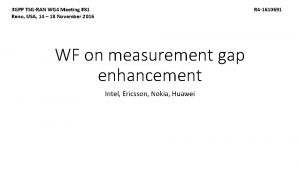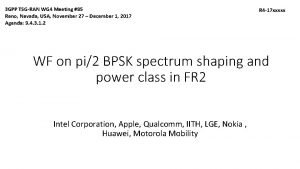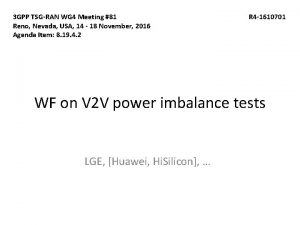3 GPP TSGRAN 4 Meeting 93 USA Reno








- Slides: 8

3 GPP TSG-RAN 4 Meeting #93 USA, Reno, November 18 - 22, 2019 Agenda item: 9. 18. 1. 2 R 4 -1915858 Document for: Approval Way forward on PMI reporting requirements for Tx ports larger than 8 and up to 32 Ericsson, Samsung

Timeline of previous agreements • #92 – WF: R 4 -1910017 • #92 bis – WF: R 4 -1912834 – simulation assumptions: R 4 -1912811

PMI tests for single panel type I requirements • Wideband PMI requirements – 32 Tx ports first off • subband PMI requirements for 16 Tx ports – If subband PMI test for 16 Tx ports will be introduced, only 32 Tx ports will be covered in wideband PMI test. – If subband PMI test for 16 Tx ports will not be introduced, both 16 and 32 Tx ports will be covered in wideband PMI test. – Decide whether to define subband requirements based on the simulation results. – Companies are encouraged to run simulation for the following 4 cases. Consider the following priority if no time to run simulation for all 4 cases. • Priority for simulation: Follow subband PMI, Random subband PMI > Follow wideband PMI > Random wideband PMI • For subband/wideband gain comparison, run all tests with channel model TDLC 300 -5

Initial Single panel type I subband PMI simulation assumptions: • • • Propagation condition: TDLC 300 -5 Correlation matrix: XP high Number of Tx ports: 16 Duplex mode: FDD Receivers: 2 Subband size: 8 • See detailed simulation assumptions for other parameters

Further Single panel type I agreements • Use rank 2 for all the PMI test • First subcarrier index and first symbol location for NZP CSI-RS – Option 1 • (k 0, k 1, k 2, k 3) = (2, 4, 6, 8), l 0 = 5 for 16 Tx ports, and (k 0, k 1, k 2, k 3) = (2, 4, 6, 8), (l 0, l 1) = (5, 7) for 32 Tx ports. – Option 2 • (k 0, k 1, k 2, k 3) = (2, 4, 6, 8), l 0 = 5 for 16 Tx ports, and (k 0, k 1, k 2, k 3) = (2, 4, 6, 8), (l 0, l 1) = (5, 12) for 32 Tx ports. – Down-select to one option in the next meeting.

Type II codebook requirements • Encourage companies to provide inputs on the following test parameters in the next meeting: – Number of Tx ports: • (N 1, N 2), (O 1, O 2) – – – – L (number. Of. Beams) Npsk (phase. Alphabet. Size) subband. Amplitude Beam steering model Test metric MCS and rank MIMO correlation Channel model

Type II Codebook simulation parameters: For information • Codebook construction – 16 Tx ports (N 1, N 2) = (4, 2) and (O 1, O 2) = (4, 4) – 32 Tx ports (N 1, N 2) = (4, 4) and (O 1, O 2) = (4, 4) • L (number. Of. Beams): 2 • Npsk (phase. Alphabet. Size) : beam combining coefficient (phase) set size, Npsk =4 • subband. Amplitude: 'true' or 'false’ • Beam steering model – beam steering model with dual-cluster beams as specified in B. 2. 3 B. 4 A of TS 36. 101 • Relative power ratio among two beams is fixed as 1 (p =1)

Type II Codebook simulation parameters: For information cont’d • Test metric: – Option 1: Relative throughput ratio between following PMI with Type II codebook and following PMI with Type I codebook – Option 2: Relative throughput ratio between following PMI and random PMI • MCS and rank: – Option 1: MCS 13, Rank 2 – Option 2: MCS 20, Rank 2 • MIMO correlation: – XP High • Channel model: – TDLA 30 -5
